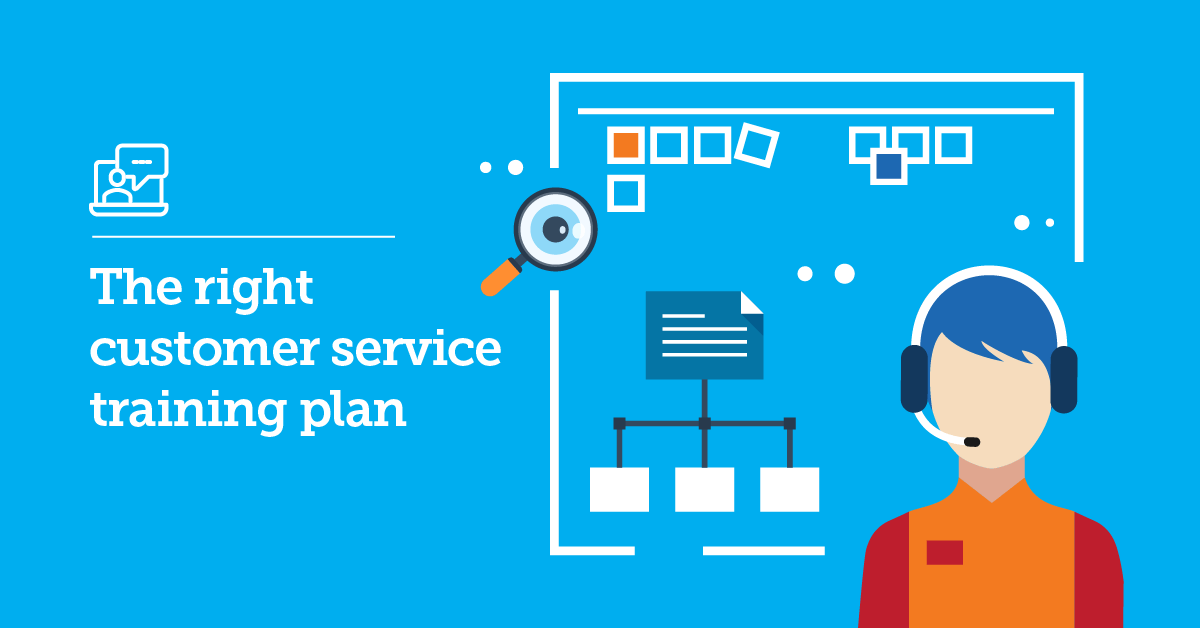
People don’t interact with brands like they used to.
Slowly but steadily, the overall brand experience has become as important as the actual products or services. This is true for as many as 84% of consumers. So how do you make sure your customer experience gives you an edge over your competitors — when just creating superior products won’t cut it anymore?
Three words: stellar customer service.
Customer service is no longer your last line of defense against angry customers. It’s an integral part and natural extension of your whole brand strategy; a way to ensure these clients will never be angry in the first place.
You know this. You also know that the only way to achieve this (and keep achieving it consistently) is to invest in customer service training.
Now you need to ensure that training your service sector will help you hit your goals — and won’t become a waste of time and resources.
Keep reading: we’ve gathered 8 simple tips that will ensure the success of your customer service training program from start to finish.
How to create a good customer service training plan
The efficiency of your customer service training hinges on three things: proper planning, proper execution and, you guessed it, proper evaluation. Ready to get started?
Plan: Make sure you understand your customers
Before you set up your customer service training program, you need to know who you’re setting it for — and why.
Customer analytics play a key part in building a successful customer service plan. You need data that will tell you things like:
- What kind of meaningful experience do customers expect from your brand?
- What’s the best way to connect with them?
- What is your customers’ current perception of your brand?
You probably already have most of this data somewhere. But using them as a marker, you can create customer service training courses that will ensure your team engages with your customers in a meaningful way.
Already, this helps ensure that your customer service training program will more than cover its cost. According to a Gallup research, using analytics to implement targeted interventions for emotionally engaging customers can bring you 50% higher revenue and 55% higher share of wallet.
Of course, the data might change in the future. But you’ll have cultivated the right approach in your customer service team, so it will be easier (and not that costly) to course correct.
Plan: Figure out your blind spots
Now that you know what your customers want, it’s time to figure out where exactly you fall short on delivering. A training needs analysis will help you with that.
A training needs analysis will help you understand:
- Your current weaknesses on an organizational level
- The role managers currently play in customer service training
- What internal resources you can pull up to help with training
- What abilities/skills/knowledge your team mostly lacks in
- The different levels of training different employees may require
- What motivates your employees to learn
This analysis will give you a clearer picture of your team’s current skill levels and strengths. Think of it as your point A; this is where you’re starting from. And you already have your point B, which is what your customers want. Now all you need to do is build the bridge that will take you from point A to point B.
That bridge is, of course, your customer service training program.
Execute: Balance between different learning methods
Are you familiar with the 70:20:10 framework? It’s built in the belief that people learn best when most of their training (70%) is experiential. Ideally, this experiential learning should be supplemented with a smaller part (20%) of learning directly from others. Only a small part (10%) should consist of formal training.
What does that mean for you? Simply put, creating a customer service training manual and expecting your employees to memorize it, is not the way to go.
Your customer service training should consist of different learning methods that will tick the boxes for experiential, social, and formal learning.
For experiential training, you’ll be using customer service training activities such as real-life scenarios and simulations. Scenarios and simulations engage your employee’s emotions, which triggers both their long- and short-term memory. This makes it easier for them to retain information and apply knowledge directly. Plus, simulations offer automated (read: unbiased) feedback that will show your employees exactly what to improve. If you’re doing mostly online customer service training, these scenarios and simulations will take place on your digital training platform.
For social learning, you can create groups in which your employees will go through simulations together to practice. You can also include peer learning sessions, where an employee who has extensive knowledge of a particular niche, can teach the others.
As for your formal training, it can be a combination of the following:
- Instructor-led training through webinars (which are great for engagement)
- Mobile learning (great for flexibility)
- Short, interactive videos
- PDFs
- Mini quizzes
You don’t have to worry so much about hitting the exact 70:20:10 ratio. But you do need to balance between different learning methods to keep learners engaged.
Execute: Keep company culture top of mind
It’s become clear by now that you need to diversify your customer service training materials. The same thing goes for your actual training content.
It’s tempting to think that customer service training will be mostly about product knowledge, perhaps with a dash of sales skills. But as important as product knowledge is, knowledge of company culture is even more crucial.
We’ve already seen the tremendous value customers place in a great brand experience. To be able to give them that experience, your customer service team needs to have a deep understanding of your mission and values. They need to know what makes your company unique. They also need to embody these values and be able to act as your brand ambassadors.
To set them up for success, make sure to include a module about your company culture in your customer service training.

Execute: Don’t forget soft skills
Everything we just said about company culture also applies to soft skills.
Soft skills are essential to any customer service team. Empathy and active listening in particular, can make all the difference between a happy and a frustrated customer. As this Training Industry article notes, one of the most important aspects of your training should be understanding there’s another human being in the room.
Other soft skills you can include to your customer service training are clear communication, positive language and, of course, persuasion.
Execute: Use the right training platform
Now you have the “why” and the “what” of your customer service training program. But equally important is the “where”.
Delivering all this great, diverse, engaging content into the wrong training platform, will affect both logistics and engagement. You need a training platform that’s flexible enough to allow you to create different types of training content and courses — and smart enough to take care of housekeeping.
Using an LMS, especially one that has an integration with a teleconference tool like Zoom, will make your life infinitely easier. You can schedule classes, distribute content and have all your diverse learning methods in one hub. Most importantly: you can easily track progress and engagement. This will make evaluation a breeze.
Which brings us to the next point.
Evaluate: Measure results, properly and often
As with any employee training, your customer service training will not be a one-off. Rather, it will be an ongoing process. So evaluation, and giving feedback, should be an ongoing process as well.
Measuring the effectiveness of your customer service training program should be twofold. On one hand, you’ll need to understand if the program managed to keep your employees engaged. You can measure things like:
- What the drop-out rate was, both from webinars and from exercises
- How people performed/ what the main pain points were
- How people felt about the experience (you can ask them to evaluate the course and themselves)
At the same time, you also need to examine how completing the program has affected some of your core KPIs. In this part of the evaluation process, you should look at things like:
- How long it takes to resolve/respond to client issues
- What the abandon rate of calls and chats is
- The number of customer callbacks
- How many chats/calls your team can complete per hour
That last part is also a way to calculate the ROI of your customer service program. You can look at your team’s improvement rate post training, check how much net benefit this gives you per day and compare that to the program’s cost.
Evaluate: Give feedback, properly and often
As your evaluation process will be ongoing, so should your feedback.
Check in with your team often. Be specific, offer actionable advice and make sure to balance the positive with the negative comments.
Sounds overwhelming? This article on the 6 ways managers can offer effective employee feedback will help.
Next Steps
Successful customer service training creates teams that will consistently offer a great brand experience to your customers.
To do that, you need to understand your customers and your blind spots during the planning stage. You need to balance between different training methods and subjects during the execution stage, as well as invest in the right platform.
Finally, you need to be diligent about evaluating. Research more on what to ask your employees after the training session. The results will be measurable — and will make all the difference for your brand.
The post 8 tips for creating a successful customer service training plan appeared first on TalentLMS Blog.
8 tips for creating a successful customer service training plan published first on https://premiumedu.weebly.com/
